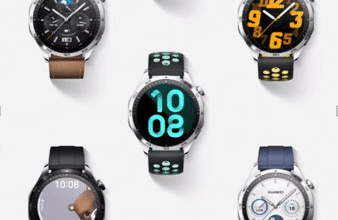PCB Hardware Design for Wearable Devices: Constraints & Innovations

The way they use electronics has changed as a result of wearable technology. Among other things, smartwatches and fitness trackers are only a couple of examples of the mini devices something individuals in the present world cannot live without. Every successful wearable gadget has a meticulously planned printed circuit board that must overcome particular difficulties and provide dependable functionality. Engineers must balance several conflicting objectives within an incredibly constrained space on the PCB design board for wearables, one of the most demanding applications in contemporary electronics.
Awareness of the Particular Difficulties
Compared to traditional electronics, wearable devices pose previously unheard-of difficulties for circuit board designers. Since these devices need to be comfortable and undetectable when worn on the human body, size restrictions are the main limitation. This implies that PCB design in USA facilities and worldwide must operate under extremely constrained dimensional parameters, frequently spanning only a few square centimeters for the complete circuit assembly.
The human body creates a hostile environment for electronic components. Strong design techniques are desirable because it is magnetic, there is constant movement, sweat moisture, and the temperatures also swing. Unlike smartphones or laptops, used in more stable settings, flexible display wearable technology needs to remain continuously functional whenever subjected to a consistently unstable state of mechanical impact, twisting, and bending forces during the performance of the usual daily activities.
It becomes critical when applying the issue of power consumption in designing circuits of products that customers expect to use day after day or week after week between charges. Wearable apps frequently find that traditional power management techniques are insufficient, necessitating creative solutions to prolong battery life while preserving full performance. This problem is made worse by the battery’s limited area, which forces circuit designers to optimize efficiency throughout the whole design process.
Material Innovations and Needs for Flexibility
The need for flexible circuit solutions that can adapt to curved surfaces and endure repeated bending cycles is growing for modern wearable technology. For applications such as curved wearable screens or smart clothes, traditional rigid PCB design board techniques frequently prove insufficient. Designers may now create three-dimensional circuit assemblies that wrap around the shapes of devices thanks to the development of flexible printed circuits and rigid-flex combinations.
Wearable applications choose extremely important substrate materials. Standard FR4 materials might not be flexible enough or durable enough for gadgets that move a lot. Superior flexibility and electrical performance are provided by advanced materials like polyimide, but their production calls for certain procedures and raises their price. American semiconductor engineering firms are still creating novel substrate materials that are especially tailored for wearable technology.
Wearable designs must also carefully take into account conductive materials. Circuit failures may result from the frequent breaking of conventional copper traces.. Using conductive inks, adhesives packed with silver, or special flexible copper foils made to resist mechanical stress are some more methods. Comparing these materials to traditional rigid circuits, different design guidelines and production techniques are frequently needed.
See also: Different Metal Bending Techniques in Manufacturing
Integration of Components and Miniaturization
Component shrinking has been driven to unprecedented levels by the unrelenting desire for smaller form factors. Ten years ago, components used in modern wearable technology would have been thought to be impossible to fit into such a small space. Technologies such as wafer-level packaging, chip-scale packaging, and ball grid array packages make it possible to incorporate sophisticated functionality into small spaces.
The importance of system-in-package solutions for wearable applications has grown. Instead of employing distinct parts for various purposes, these integrated solutions consolidate several circuit functions into a single package. This technique makes the system more reliable by reducing the connection among non-homogeneous parts and reducing the overall quantity of board space used.
With three-dimensional circuit assembly techniques, designers can make the most out of the limited board space by stacking the components vertically. These approaches, though, bring other challenges as far as the complexity of assembling is concerned and heat management. The PCB designing board must accommodate several layers of components and should be manufacturable as well as have adequate area to vent the flow of heat.
Batteries and Power Management Incorporation
Appropriate power management is one of the most important wearable technology designs. These users expect the devices to be able to operate and work for long hours, like days or weeks, without deteriorating in performance. This requirement contributes to the development of the need for ultra-low-power circuit designs where less current is consumed in all the operating modes.
Better power management. Various components of the circuit can operate at different power levels and with different voltages due to the numerous power domains provided by a purpose-built integrated circuit designed to be used in wearable electronics. The tools have intelligent power management algorithms that enable the dynamic adjustment of power consumption to comply with usage patterns, thus extending battery life.
The Design of Antennas and Wireless Communication
In order to communicate with smartphones or cloud services and synchronize data, the majority of wearable technology needs wireless connectivity. Since the human body is close by and impacts radio frequency performance, antenna design becomes especially difficult in these applications.
Conventional antenna designs frequently fall short in wearable applications. The high attenuation dielectric characteristics of the human body may significantly determine radiation patterns and efficiency of the antenna. Engineers should observe these effects in the design phase, which at times might require specialized antenna systems customized to body wear.
Semiconductor engineering research centers in the United States keep developing novel antenna technologies suitable for wearable technology. These consist of near-field communication solutions for applications requiring close-range data transfer, flexible antennas that can adapt to the shape of the device, and printed antennas that are integrated straight onto the circuit board.
Conclusion:
At the forefront of contemporary electronics engineering, wearable device PCB design board development necessitates creative ways to get around limitations in durability, power, and space. These small devices are largely dependent on worldwide engineering know-how and sophisticated PCB design in the USA. They can anticipate ground-breaking developments in materials, miniaturization, and integration methods while semiconductor engineering in USA persists. In addition to providing improved functionality and user experiences, the future holds far more advanced wearable technology that will fit in perfectly with their everyday schedules.




